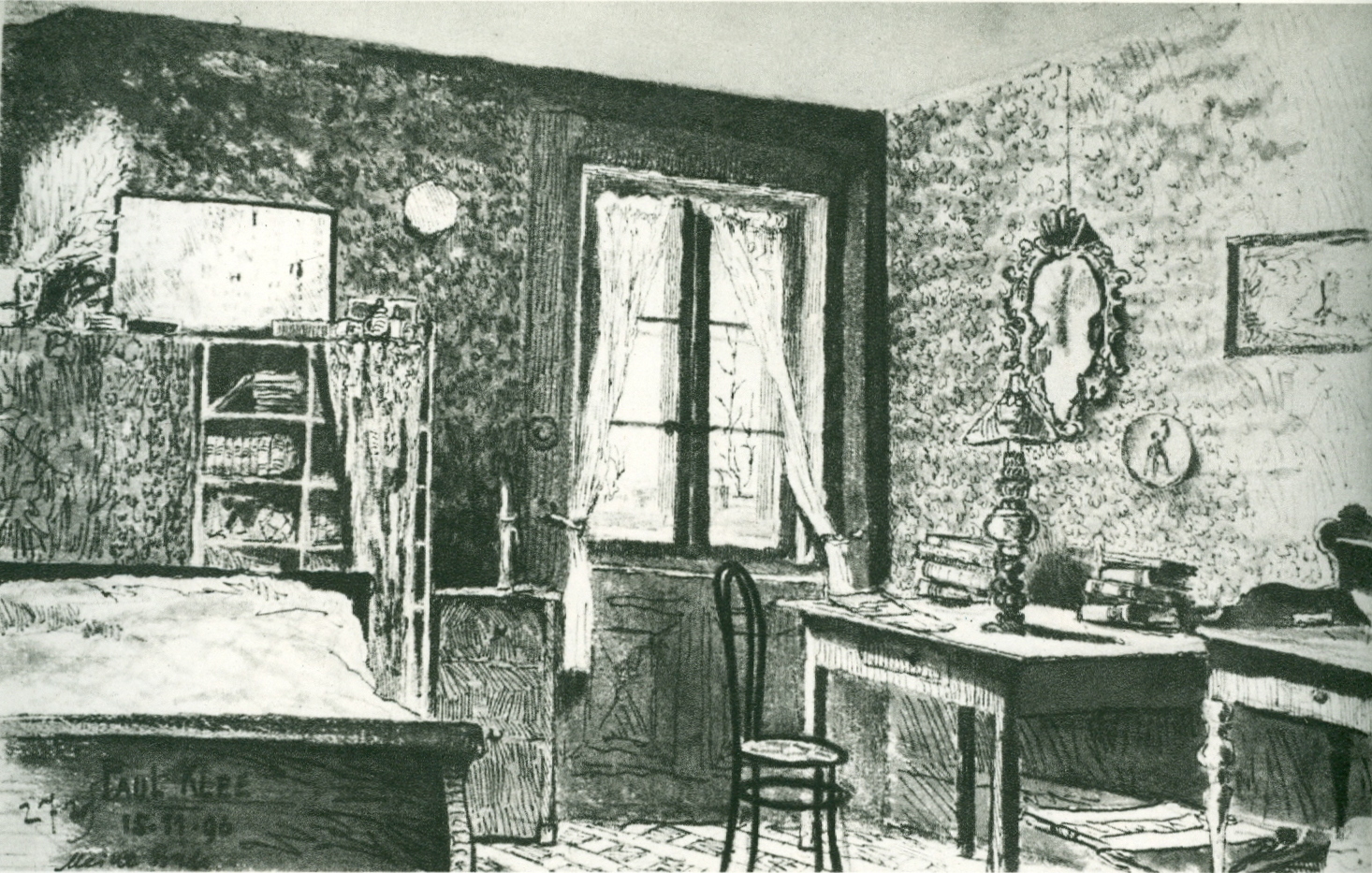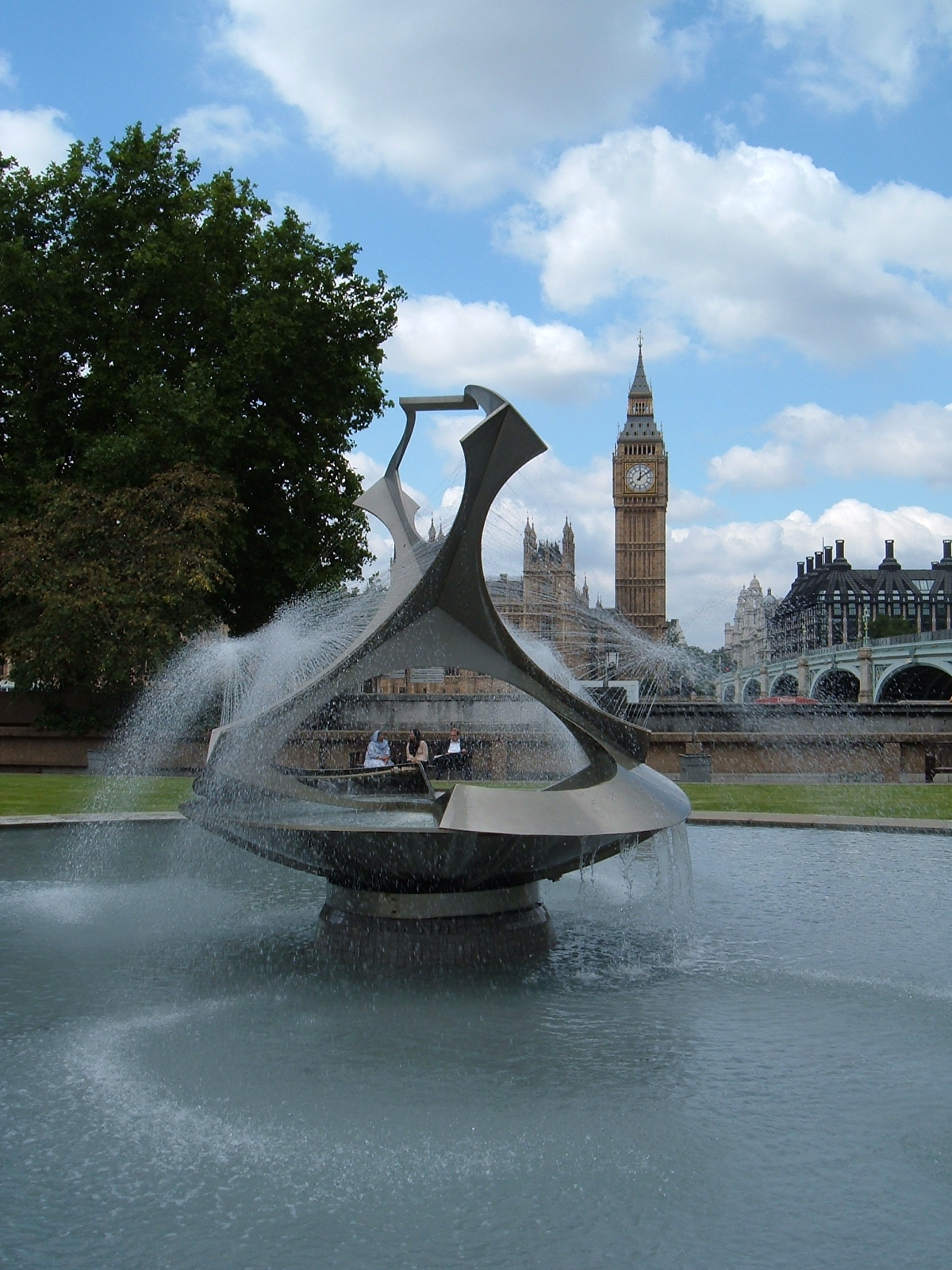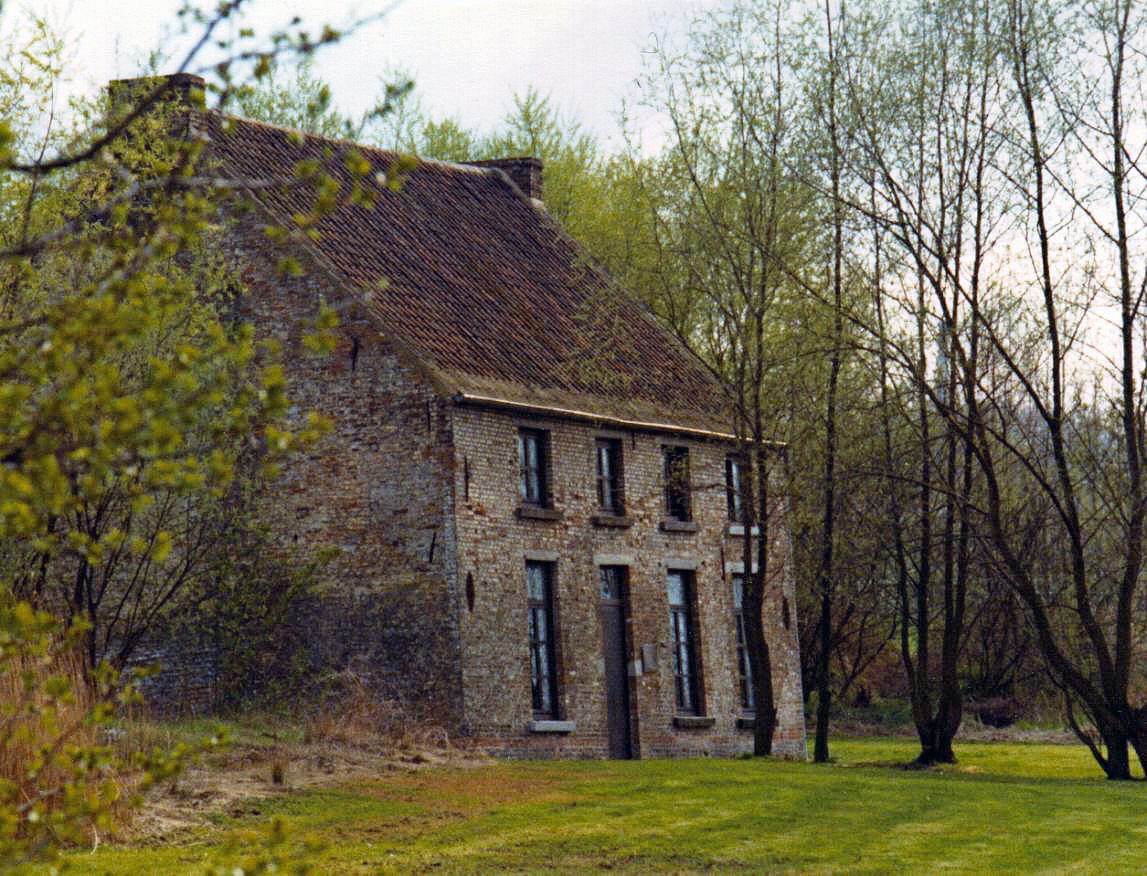|
Psychology Of Art
The psychology of art is the scientific study of cognitive and emotional processes precipitated by the sensory perception of aesthetic artefacts, such as viewing a painting or touching a sculpture. It is an emerging multidisciplinary field of inquiry, closely related to the psychology of aesthetics, including neuroaesthetics. The psychology of art encompasses experimental methods for the qualitative examination of psychological responses to art, as well as an empirical study of their neurobiological correlates through neuroimaging. History 1880-1950 One of the earliest to integrate psychology with art history was Heinrich Wölfflin (1864–1945), a Swiss art critic and historian, whose dissertation ''Prolegomena zu einer Psychologie der Architektur'' (1886) attempted to show that architecture could be understood from a purely psychological (as opposed to a historical-progressivist) point of view.Mark Jarzombek. ''The Psychologizing of Modernity'' (Cambridge University Press ... [...More Info...] [...Related Items...] OR: [Wikipedia] [Google] [Baidu] |
Cognition
Cognition is the "mental action or process of acquiring knowledge and understanding through thought, experience, and the senses". It encompasses all aspects of intellectual functions and processes such as: perception, attention, thought, imagination, intelligence, the formation of knowledge, memory and working memory, judgment and evaluation, reasoning and computation, problem-solving and decision-making, comprehension and production of language. Cognitive processes use existing knowledge to discover new knowledge. Cognitive processes are analyzed from very different perspectives within different contexts, notably in the fields of linguistics, musicology, anesthesia, neuroscience, psychiatry, psychology, education, philosophy, anthropology, biology, systemics, logic, and computer science. These and other approaches to the analysis of cognition (such as embodied cognition) are synthesized in the developing field of cognitive science, a progressively autonomou ... [...More Info...] [...Related Items...] OR: [Wikipedia] [Google] [Baidu] |
Lev Vygotsky
Lev Semyonovich Vygotsky (, ; ; – June 11, 1934) was a Russian and Soviet psychologist, best known for his work on psychological development in children and creating the framework known as cultural-historical activity theory. After his early death, his books and research were banned in the Soviet Union until Joseph Stalin's death in 1953, with a first collection of major texts published in 1956. His major ideas include: *''The social origin of mind'': Vygotsky believed that human mental and cognitive abilities are not biologically determined, but instead created and shaped by use of language and tools in the process of interacting and constructing the cultural and social environment. *''The importance of mediation'': He saw mediation as the key to human development, because it leads to the use of cultural tools and becomes a pathway for psychological development through the process of interiorization. *''The zone of proximal development'': Vygotsky introduced the concept, ... [...More Info...] [...Related Items...] OR: [Wikipedia] [Google] [Baidu] |
Herbert Read
Sir Herbert Edward Read, (; 4 December 1893 – 12 June 1968) was an English art historian, poet, literary critic and philosopher, best known for numerous books on art, which included influential volumes on the role of art in education. Read was co-founder of the Institute of Contemporary Arts. As well as being a prominent English anarchist, he was one of the earliest English writers to take notice of existentialism. He was co-editor with Michael Fordham and Gerhard Adler of the British edition in English of ''The Collected Works of C. G. Jung''. He was a professor of fine art at Edinburgh University from 1931 to 1933, a lecturer in art at the University of Liverpool (1935-36), Leon Fellow at University of London (1940-42), and Charles Eliot Norton Professor of Poetry at Harvard University (1953-54). Early life The eldest of four children of tenant farmer Herbert Edward Read (1868–1903) and his wife Eliza Strickland, Read was born at Muscoates Grange, near Nunnington, about f ... [...More Info...] [...Related Items...] OR: [Wikipedia] [Google] [Baidu] |
Clive Bell
Arthur Clive Heward Bell (16 September 1881 – 17 September 1964) was an English art critic, associated with formalism and the Bloomsbury Group. He developed the art theory known as significant form. Biography Early life and education Bell was born in East Shefford, Berkshire, in 1881, the third of four children of William Heward Bell (1849–1927) and Hannah Taylor Cory (1850–1942). He had an elder brother ( Cory), an elder sister (Lorna, Mrs Acton), and a younger sister (Dorothy, Mrs Hony). His father was a civil engineer who built his fortune in the family coal mines at Merthyr Tydfil in Wales – "a family which drew its wealth from Welsh mines and expended it on the destruction of wild animals." They lived at Cleeve House, Seend, near Devizes, Wiltshire, where Squire Bell's many hunting trophies were displayed. Bell was educated at Marlborough College and at Trinity College, Cambridge, studying history. In 1902 he gained an Earl of Derby scholarship to study in Par ... [...More Info...] [...Related Items...] OR: [Wikipedia] [Google] [Baidu] |
La Psychologie De L'Art
''La Psychologie de l'Art'' (''The Psychology of Art'') is a work of art history by André Malraux. The book offers an explication of Malraux's philosophy of art ''via'' the history of Western painting. It was originally published in three volumes: ''The Imaginary Museum'' (1947); ''The Artistic Creation'' (1948); and ''Aftermath of the Absolute'' (1949). In 1953 a revised, single-volume edition was published as ''The Voices of Silence''. Stuart Gilbert translated all four books into English. In France, Malraux's works of art history were touchstones of their time and exerted a major influence on (for example) Jean-Luc Godard Jean-Luc Godard ( , ; ; 3 December 193013 September 2022) was a French and Swiss film director, screenwriter, and film critic. He rose to prominence as a pioneer of the French New Wave film movement of the 1960s, alongside such filmmakers as ... in his own work of critical art history, '' Histoire(s) du cinéma''. Witt, Michael: ''Jean-Luc Godard ... [...More Info...] [...Related Items...] OR: [Wikipedia] [Google] [Baidu] |
André Malraux
Georges André Malraux ( ; ; 3 November 1901 – 23 November 1976) was a French novelist, art theorist, and minister of cultural affairs. Malraux's novel ''La Condition Humaine'' (''Man's Fate'') (1933) won the Prix Goncourt. He was appointed by President Charles de Gaulle as information minister (1945–46) and subsequently as France's first cultural affairs minister during de Gaulle's presidency (1959–1969). Early years Malraux was born in Paris in 1901, the son of Fernand-Georges Malraux (1875–1930) and Berthe Félicie Lamy (1877–1932). His parents separated in 1905 and eventually divorced. There are suggestions that Malraux's paternal grandfather committed suicide in 1909."Biographie détaillée" , André Malraux Website, accessed 3 September 2010 Malraux was raised by his mother, his mate ... [...More Info...] [...Related Items...] OR: [Wikipedia] [Google] [Baidu] |
György Kepes
György Kepes (; October 4, 1906 – December 29, 2001) was a Hungarian-born painter, photographer, designer, educator, and art theorist. After immigrating to the U.S. in 1937, he taught design at the New Bauhaus (later the School of Design, then Institute of Design, then Illinois Institute of Design or IIT) in Chicago. In 1967 he founded the Center for Advanced Visual Studies at the Massachusetts Institute of Technology (MIT) where he taught until his retirement in 1974. Early years Kepes was born in Selyp, Hungary. His younger brother was Imre Kepes, an ambassador in Argentina, father of András Kepes, journalist, documentary filmmaker and author. His distinguished Jewish family included Gyula Kepes, doctor and polar explorer. At age 18, he enrolled at the Royal Academy of Fine Arts in Budapest, where he studied for four years with Istvan Csok, a Hungarian impressionist painter. In the same period, he was also influenced by the socialist avant-garde poet and painter Laj ... [...More Info...] [...Related Items...] OR: [Wikipedia] [Google] [Baidu] |
Josef Albers
Josef Albers ( , , ; March 19, 1888March 25, 1976) was a German-born American artist and Visual arts education, educator who is considered one of the most influential 20th-century art teachers in the United States. Born in 1888 in Bottrop, Westphalia, Germany, into a Roman Catholic family with a background in craftsmanship, Albers received practical training in diverse skills like engraving glass, plumbing, and wiring during his childhood. He later worked as a schoolteacher from 1908 to 1913 and received his first public commission in 1918 and moved to Munich in 1919. In 1920, Albers joined the Weimar Bauhaus as a student and became a faculty member in 1922, teaching the principles of handicrafts. With the Bauhaus's move to Dessau in 1925, he was promoted to professor and married Anni Albers, a student at the institution and a Textile arts, textile artist. Albers' work in Dessau included designing furniture and working with Glass making, glass, collaborating with established art ... [...More Info...] [...Related Items...] OR: [Wikipedia] [Google] [Baidu] |
Wassily Kandinsky
Wassily Wassilyevich Kandinsky ( – 13 December 1944) was a Russian painter and art theorist. Kandinsky is generally credited as one of the pioneers of abstract art, abstraction in western art. Born in Moscow, he spent his childhood in Odessa, where he graduated from Grekov Odesa Art School, Odessa Art School. He enrolled at the University of Moscow, studying law and economics. Successful in his profession, he was offered a professorship (chair of Roman Law) at the University of Tartu, University of Dorpat (today Tartu, Estonia). Kandinsky began painting studies (life-drawing, sketching and anatomy) at the age of 30. In 1896, Kandinsky settled in Munich, studying first at Anton Ažbe's private school and then at the Academy of Fine Arts, Munich, Academy of Fine Arts. During this time, he was first the teacher and then the partner of German artist Gabriele Münter. He returned to Moscow in 1914 after the outbreak of World War I. Following the Russian Revolution, Kand ... [...More Info...] [...Related Items...] OR: [Wikipedia] [Google] [Baidu] |
Paul Klee
Paul Klee (; 18 December 1879 – 29 June 1940) was a Swiss-born German artist. His highly individual style was influenced by movements in art that included expressionism, cubism, and surrealism. Klee was a natural draftsman who experimented with and eventually deeply explored color theory, writing about it extensively; his lectures ''Writings on Form and Design Theory'' (''Schriften zur Form und Gestaltungslehre''), published in English as the ''Paul Klee Notebooks'', are held to be as important for modern art as Leonardo da Vinci's ''A Treatise on Painting'' was for the Renaissance. He and his colleague, Russian painter Wassily Kandinsky, both taught at the Bauhaus school of art, design and architecture in Germany. His works reflect his dry humor and his sometimes childlike perspective, his personal moods and beliefs, and his musicality. Early life and training Paul Klee was born in Münchenbuchsee, Switzerland, as the second child of German music teacher Hans Wilhelm Klee ... [...More Info...] [...Related Items...] OR: [Wikipedia] [Google] [Baidu] |
Naum Gabo
Naum Gabo (born Naum Neemia Pevsner; Russian language, Russian: Наум Борисович Певзнер; Hebrew language, Hebrew: נחום נחמיה פבזנר) (23 August 1977) was an influential sculptor, theorist, and key figure in Russia's post-Soviet revolution, Revolution avant-garde and the subsequent development of twentieth-century sculpture.Tate GalleryNaum Gabo biography Retrieved March 23, 2018. His work combined geometric abstraction with a dynamic organization of form in small reliefs and constructions, monumental public sculpture and pioneering Kinetic art, kinetic works that assimilated new materials such as nylon, wire, lucite and semi-transparent materials, glass and metal. Responding to the scientific and political revolutions of his age, Gabo led an eventful and peripatetic life, moving to Berlin, Paris, Oslo, Moscow, London, and finally the United States, and within the circles of the major avant-garde movements of the day, including Cubism, Futurism, Constr ... [...More Info...] [...Related Items...] OR: [Wikipedia] [Google] [Baidu] |
Vincent Van Gogh (1853-1890) - Wheat Field With Crows (1890)
Vincent Willem van Gogh (; 30 March 185329 July 1890) was a Dutch Post-Impressionist painter who is among the most famous and influential figures in the history of Western art. In just over a decade, he created approximately 2,100 artworks, including around 860 oil paintings, most of them in the last two years of his life. His oeuvre includes landscapes, still lifes, portraits, and self-portraits, most of which are characterised by bold colours and dramatic brushwork that contributed to the rise of expressionism in modern art. Van Gogh's work was only beginning to gain critical attention before he died from a self-inflicted gunshot at age 37. During his lifetime, only one of Van Gogh's paintings, ''The Red Vineyard'', was sold. Born into an upper-middle-class family, Van Gogh drew as a child and was serious, quiet and thoughtful, but showed signs of mental instability. As a young man, he worked as an art dealer, often travelling, but became depressed after he was transfe ... [...More Info...] [...Related Items...] OR: [Wikipedia] [Google] [Baidu] |







